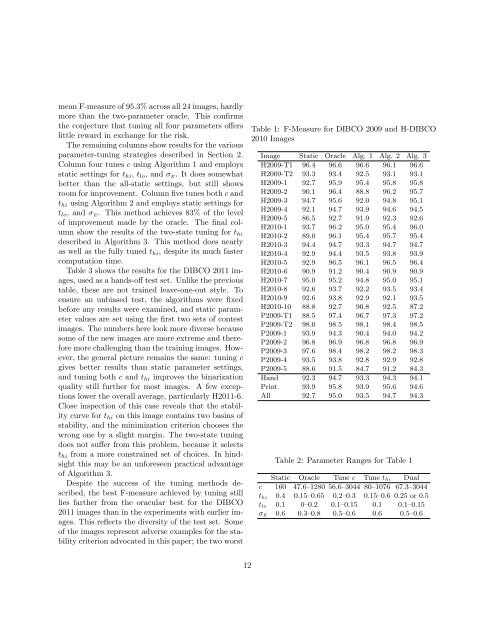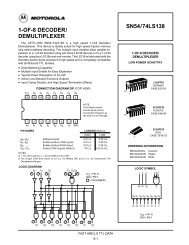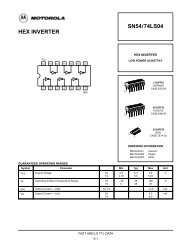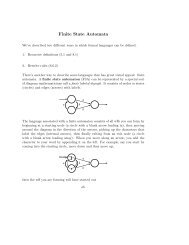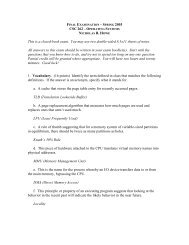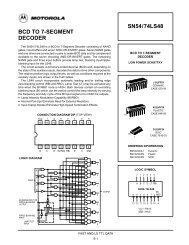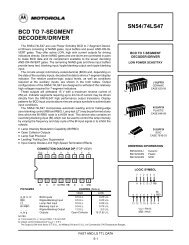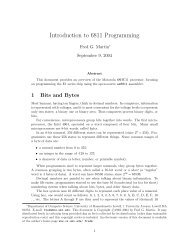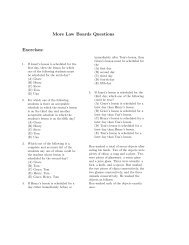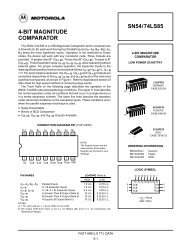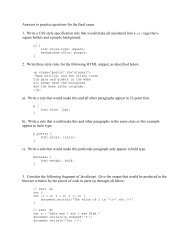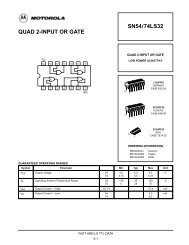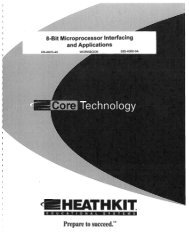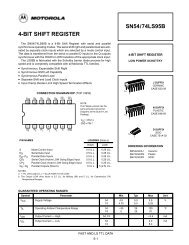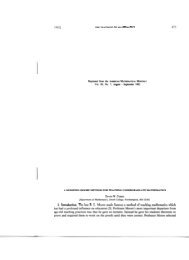Document Binarization with Automatic Parameter Tuning
Document Binarization with Automatic Parameter Tuning
Document Binarization with Automatic Parameter Tuning
Create successful ePaper yourself
Turn your PDF publications into a flip-book with our unique Google optimized e-Paper software.
mean F-measure of 95.3% across all 24 images, hardlymore than the two-parameter oracle. This confirmsthe conjecture that tuning all four parameters offerslittle reward in exchange for the risk.The remaining columns show results for the variousparameter-tuning strategies described in Section 2.Column four tunes c using Algorithm 1 and employsstatic settings for t hi , t lo , and σ E . It does somewhatbetter than the all-static settings, but still showsroom for improvement. Column five tunes both c andt hi using Algorithm 2 and employs static settings fort lo , and σ E . This method achieves 83% of the levelof improvement made by the oracle. The final columnshow the results of the two-state tuning for t hidescribed in Algorithm 3. This method does nearlyas well as the fully tuned t hi , despite its much fastercomputation time.Table 3 shows the results for the DIBCO 2011 images,used as a hands-off test set. Unlike the previoustable, these are not trained leave-one-out style. Toensure an unbiased test, the algorithms were fixedbefore any results were examined, and static parametervalues are set using the first two sets of contestimages. The numbers here look more diverse becausesome of the new images are more extreme and thereforemore challenging than the training images. However,the general picture remains the same: tuning cgives better results than static parameter settings,and tuning both c and t hi improves the binarizationquality still further for most images. A few exceptionslower the overall average, particularly H2011-6.Close inspection of this case reveals that the stabilitycurve for t hi on this image contains two basins ofstability, and the minimization criterion chooses thewrong one by a slight margin. The two-state tuningdoes not suffer from this problem, because it selectst hi from a more constrained set of choices. In hindsightthis may be an unforeseen practical advantageof Algorithm 3.Despite the success of the tuning methods described,the best F-measure achieved by tuning stilllies farther from the oracular best for the DIBCO2011 images than in the experiments <strong>with</strong> earlier images.This reflects the diversity of the test set. Someof the images represent adverse examples for the stabilitycriterion advocated in this paper; the two worstTable 1: F-Measure for DIBCO 2009 and H-DIBCO2010 ImagesImage Static Oracle Alg. 1 Alg. 2 Alg. 3H2009-T1 96.4 96.6 96.6 96.1 96.6H2009-T2 93.3 93.4 92.5 93.1 93.1H2009-1 92.7 95.9 95.4 95.8 95.8H2009-2 90.1 96.4 88.8 96.2 95.7H2009-3 94.7 95.6 92.0 94.8 95.1H2009-4 92.1 94.7 93.9 94.6 94.5H2009-5 86.5 92.7 91.9 92.3 92.6H2010-1 93.7 96.2 95.0 95.4 96.0H2010-2 89.0 96.1 95.4 95.7 95.4H2010-3 94.4 94.7 93.3 94.7 94.7H2010-4 92.9 94.4 93.5 93.8 93.9H2010-5 92.9 96.5 96.1 96.5 96.4H2010-6 90.9 91.2 90.4 90.9 90.9H2010-7 95.0 95.2 94.8 95.0 95.1H2010-8 92.6 93.7 92.2 93.5 93.4H2010-9 92.6 93.8 92.9 92.1 93.5H2010-10 88.8 92.7 90.8 92.5 87.2P2009-T1 88.5 97.4 96.7 97.3 97.2P2009-T2 98.0 98.5 98.1 98.4 98.5P2009-1 93.9 94.3 90.4 94.0 94.2P2009-2 96.8 96.9 96.8 96.8 96.9P2009-3 97.6 98.4 98.2 98.2 98.3P2009-4 93.5 93.8 92.8 92.9 92.8P2009-5 88.6 91.5 84.7 91.2 84.3Hand 92.3 94.7 93.3 94.3 94.1Print 93.9 95.8 93.9 95.6 94.6All 92.7 95.0 93.5 94.7 94.3Table 2: <strong>Parameter</strong> Ranges for Table 1Static Oracle Tune c Tune t hi Dualc 160 47.6–1280 56.6–3044 80–1076 67.3–3044t hi 0.4 0.15–0.65 0.2–0.3 0.15–0.6 0.25 or 0.5t lo 0.1 0–0.2 0.1–0.15 0.1 0.1–0.15σ E 0.6 0.3–0.8 0.5–0.6 0.6 0.5–0.612


